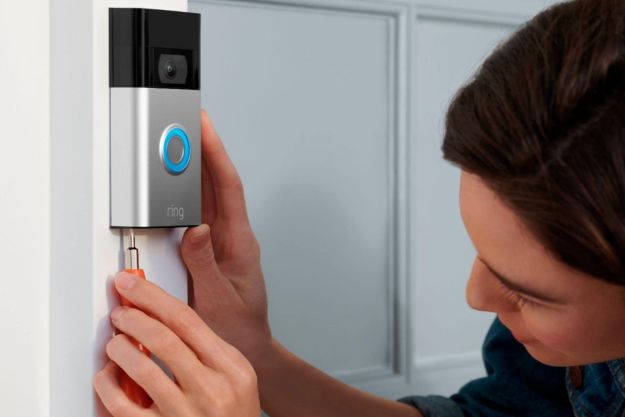There's nothing quite like expanding the colors and action of your favorite shows beyond your TV to your entire viewing area. All of a sudden, your living room is exploding with reds and oranges when a grenade goes off in the show, or you're surrounded by blues when going under the waves in a nature documentary. Ambient lighting is something that smart light manufacturers have leaned into. They have all the tools you need to project your favorite TV shows and movies to the rest of the room -- it just depends on your current set-up.
How to sync smart lights with a PC
One of the easiest ways to mirror your smart lights to your TV shows is when you're watching them on a PC connected to your TV. Let's use Philips Hue as a common example. It's worth noting that you need a Hue Bridge V2 in order for this method to work. If you're using the first-generation bridge, we suggest ScreenBloom as an alternative.
Step 1: Download and install the Hue Sync desktop app.
Step 2: Click Search for Bridge. Allow access if needed.
Step 3: Agree to the privacy policy and click Connect.
Step 4: Press the button on the Bridge to confirm the connection.
Step 5: Open the mobile app and tap the Settings icon in the bottom-right.
Step 6: Tap Entertainment Areas and tap the + symbol in the top-right.
Step 7: Pick Watching TV or a Movie, then name the area.
Step 8: Identify the lights you wish to include in your entertainment area. Set their location and height relative to your viewing position.
Step 9: Return to the desktop app and designate the sync area you want active.
Step 10: Select Video, the response speed you want (moderate tends to work well), and click Start Light Sync.
How to sync smart lights with other video sources
When you're getting video via gaming consoles, Blu-ray players, Chromecast, or other sources, having a desktop app as an intermediary isn't an option. Luckily, it's possible to buy hardware that interprets the incoming video signal and communicates to your smart lights.
The Hue Play HDMI Sync Box is an example of the kinds of products available for this task. This one, in particular, has four HDMI slots, so you can pipe all of your peripherals into it before continuing on to the TV.
Step 1: Plug all of your HDMI sources into the sync box.
Step 2: Plug the sync box output into your TV's HDMI port.
Step 3: Connect the sync box to a power outlet.
Step 4: Press the button on the front to turn on the sync box. Press it again to switch between HDMI inputs.
Step 5: Download and install the Philips Hue Sync app.
Step 6: Confirm when asked if your Bridge and Sync box are set up.
Step 7: Confirm the light on the sync box is blinking blue.
Step 8: Tap Search so your phone can pair with the sync box. Confirm the Bluetooth pairing request when it pops up.
Step 9: Tap *Set Up Wi-Fi *and provide the sync box with your home network password.
Step 10: Press and hold the Sync Box Button to confirm the pairing once complete.
Step 11: Tap Search for Hue Bridge and press the button on your Bridge.
Step 12: Create an entertainment area as per the instruction above if you don't have one already.
Can you sync Hue lights to TV without a sync box?
The only real way to sync your on-screen experience with your smart lights is to use mobile apps that capture TV screen colors and replicate them to your lights in real-time. HueDynamic is a popular option, but you're sure to find similar apps for other platforms with minimal digging.
That's all you really need to know about how to sync your smart lights with your TV programs. Other major manufacturers will have the same feature with similar set-up options: Either install a desktop PC app, get an HDMI adapter to communicate to your lights, or use a smartphone camera to coordinate. Once it's all said and done, you'll be able to enjoy a new level of immersion in your TV shows and movies. Read our tutorial on how to sync your lights to music to keep the party going.
Editors' Recommendations
- How to save Ring Doorbell video without a subscription
- How to fix the ‘unreachable’ error on Nanoleaf Skylight
- How to reset Philips Hue bulbs and light strips
- Home Depot’s Hubspace is a great way to start building your smart home
- How to view your IP camera remotely via a web browser




